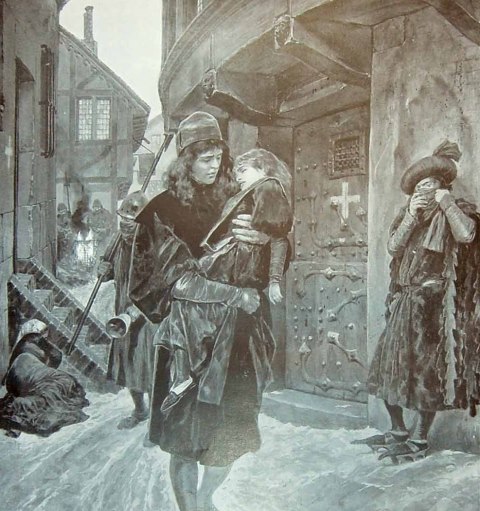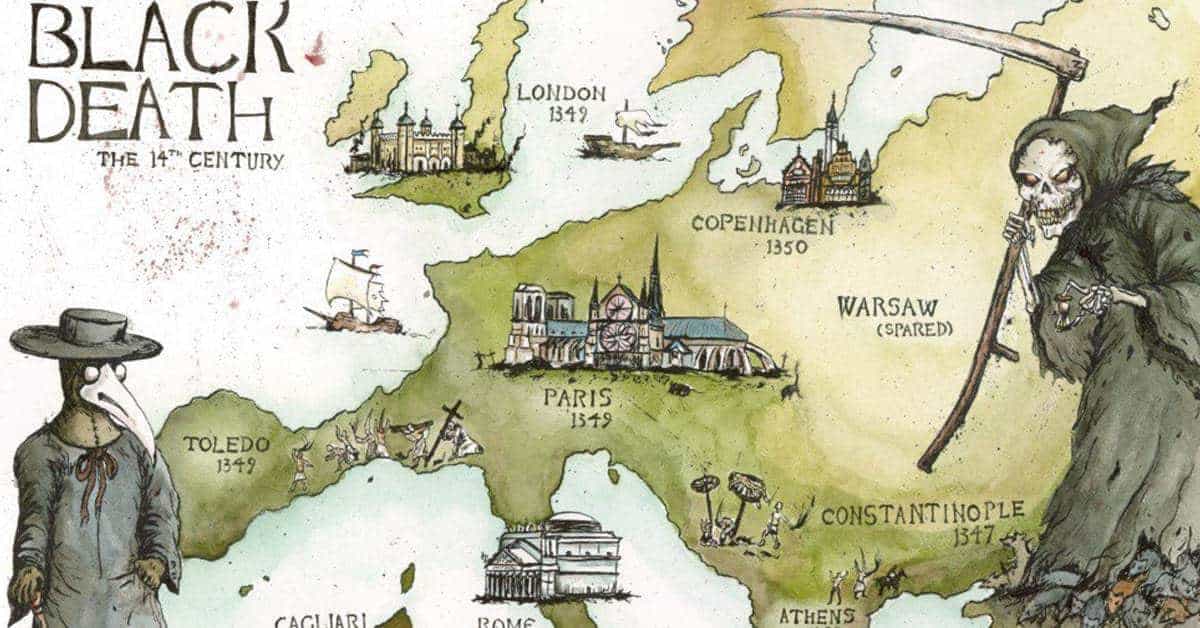 |
| London lost nearly one-third of its population during the Black Death of the 14th century |
Robert of Avesbury says: Those marked for death scarcely lived longer than three or four days. It (the plague) showed favor to no one, except a very few of the wealthy. On the same day, 20, 40 or 60 bodies, and sometimes many more, might be committed for burial together in the same pit.
 |
| Map of regions plagued with Black Death |
Two ex-Chancellors and three Archbishops of Canterbury all died in quick succession. A large black slab in the southern cloister of Westminster Abbey covers the remains of the Abbot of Westminster and 27 of his monks who were also taken by the plague.
It raged in London until spring 1350, and is assumed to have killed between one third and one half of the populace.
 |
| Skeletons found in London |
March 2013: Workers on The Crossrail project have discovered a mass grave thought to contain the bodies of Londoners who died from the Black Plague.
This isn't the first time a large number of skeletons has been discovered during building work in the capital.
In October 2012, construction of a multi-million-pound leisure center in Elephant and Castle was suspended after the discovery of 500 skeletons. They were in crypts, some of which dated back to before the Black Death in the 1300s.
Black Death facts
- The Black Death struck London in the autumn of 1348
- During the next 18 months, it killed half of all Londoners – perhaps 40,000 people
- Most experts believe that it was bubonic plague
- Symptoms included headaches, fever, vomiting, painful swellings on the neck, armpits and groin (buboes), blisters and bruises, coughing up blood
- There were so many dead that Londoners had to dig mass graves. In some of the trenches, the bodies were piled on top of each other, up to five deep. Children’s bodies were placed in the small spaces between adults
- Many people have heard of the Black Death of 1348 and the Great Plague of 1665. However, it is less well-known that these famous outbreaks are only two of nearly 40 that London suffered between 1348 and 1665
- A major outbreak of the disease struck roughly every 20-30 years, killing around 20% of London’s population each time. There were lesser outbreaks in-between the major ones and sometimes the disease could continue for several years in a less serious form
- The term ‘Black Death’ was first used in the 1800s. Medieval people called the disease the ‘Great Pestilence’
- The plague lingered until the last reported case in 1679
- The plague still exists today in countries like India and the United States
Click This Link To Learn More About The Black Death:
https://www.britainexpress.com/History/medieval/black-death.htm
Thanks for stopping by. Here's our link. Please share it with your friends so they can enjoy our websites too. Thanks!
https://nowyouknowthis2.blogspot.com/2017/02/black-death-in-14th-century-london.html
https://nowyouknowthis2.blogspot.com/2017/02/black-death-in-14th-century-london.html